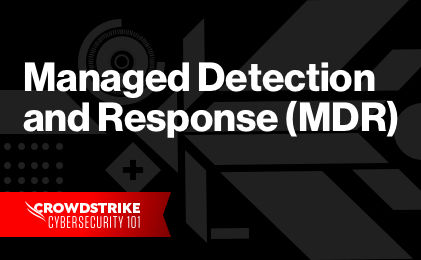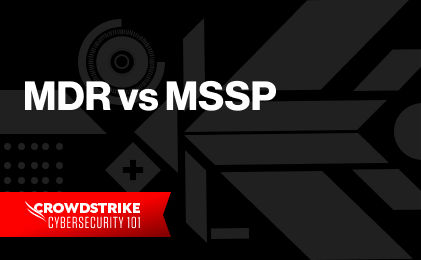MDR vs. SOC Services
When we look at the increasing number and evolving sophistication of modern cyber threats, it’s clear that robust cybersecurity defenses are essential for every modern enterprise.
Cybersecurity tools and services abound, but two standout services are managed detection and response (MDR) and security operations center (SOC) services. MDR offers a 24/7, expert-driven approach to actively monitor, detect, and respond to threats.
In contrast, SOC services operate as the heart of an organization's security, using a blend of technology, processes, and personnel to oversee security operations on a broad scale.
In this post, we’ll examine MDR and SOC services. We’ll explore their operations and benefits, highlighting their similarities and differences. Finally, we'll walk you through how to assess your organization’s specific needs to determine the most suitable solution, whether it's MDR, SOC services, or a combination of both.
What is MDR?
MDR is a comprehensive cybersecurity service that focuses on proactive and continuous monitoring, detection, investigation, and response to cyber threats. The goal of MDR is to help your organization quickly identify and mitigate threats — before they impact your business operations. When MDR does its job, it will reduce your risk of security breaches, minimize the time you need to detect and respond to threats, and provide your organization with expert security guidance. These are the key operations that are vital to effective MDR:
- Detection: Using continuous monitoring to identify potential security threats and vulnerabilities
- Investigation: Evaluating detected threats to determine their nature, scope, and potential impact
- Response: Taking immediate and appropriate action to mitigate identified threats and minimize impact
The success of MDR relies heavily on integrating advanced technologies with the expertise of dedicated security teams. These technologies, including AI and machine learning, enable the automation and enhancement of threat detection and analysis processes. Meanwhile, expert teams bring specialized knowledge and skills to manage and respond to complex security incidents.
What is a SOC?
Put simply, a SOC is the brains of an organization's cybersecurity efforts, tasked with continuously monitoring, assessing, and defending against cyber threats.
The goal of the SOC is to ensure the security of your organization's information assets through real-time analysis and rapid response to incidents. There are three core components at the heart of SOC operations:
- Technology: State-of-the-art security tools and platforms to gather and analyze data
- Processes: Defined procedures and protocols to efficiently address potential security incidents
- Personnel: A team of skilled cybersecurity professionals who oversee the operational aspects, from monitoring to incident response

2024 CrowdStrike Global Threat Report
The 2024 Global Threat Report unveils an alarming rise in covert activity and a cyber threat landscape dominated by stealth. Data theft, cloud breaches, and malware-free attacks are on the rise. Read about how adversaries continue to adapt despite advancements in detection technology.
Download NowComparing MDR and SOC services
Let’s consider the key similarities and differences between MDR and SOC services. This will establish a foundation for your organization as it considers which service aligns best with its security needs.
Key similarities
Both MDR and SOC services aim to protect organizations from cybersecurity threats. Although their methods are different, MDR and SOC services both share a commitment to:
- Strengthening security posture: Enhancing threat detection, response, and prevention to safeguard organizational assets
- Using advanced technologies: Leveraging advanced tools and methodologies, including AI and machine learning, to identify and mitigate threats
Key differences
MDR provides outsourced expertise, focusing on proactive monitoring, threat hunting, and 24/7 response. In contrast, a SOC has a broader organizational role; it offers comprehensive security oversight but requires internal management and resources.
- Deployment and management: MDR services are typically quicker to deploy, as they don't require the extensive infrastructure and personnel setup that a SOC does. Meanwhile, a SOC may involve a significant investment in both technology and skilled staff, necessitating a long-term strategy for development and integration within your organization.
- Customization and flexibility: MDR services often offer more flexibility. They can be tailored to fit specific organizational needs, providing targeted solutions without the need for extensive internal cybersecurity expertise. SOCs, however, offer customization in terms of processes and protocols, and they are more suited for organizations looking to build or expand their internal cybersecurity capabilities.
How an enterprise should evaluate which service it needs
Choosing between MDR and SOC services will require you to first take a deep dive into your organization's specific cybersecurity requirements, existing infrastructure, and future objectives. Your first step should be assessing your current security posture, identifying any gaps in threat detection, response capabilities, and overall cybersecurity strategy.
Next, decision-makers should engage key stakeholders from various departments to understand the broader impact of this decision. Align your cybersecurity strategy with your business goals. Considerations such as budget constraints, the scalability of services, and integration with existing systems are critical at this stage.
Finally, it’s key for you to understand the differences in operational scope, deployment, management, and customization options between MDR and SOC services. Enterprises should weigh these factors against their unique needs, resources, and cybersecurity objectives to make an informed decision. This process ensures that the chosen service not only meets immediate security needs but supports long-term business goals.

2023 Threat Hunting Report
In the 2023 Threat Hunting Report, CrowdStrike’s Counter Adversary Operations team exposes the latest adversary tradecraft and provides knowledge and insights to help stop breaches.
Download NowConclusion
MDR offers a focused approach to cybersecurity, emphasizing proactive monitoring, threat hunting, and rapid response to incidents around the clock. On the other hand, SOC services provide a comprehensive framework for security oversight, incorporating a mix of technology, processes, and expert personnel to monitor and protect against threats on a broader scale. CrowdStrike Falcon® Complete MDR exemplifies top-tier MDR services, ensuring organizations are shielded against cyber threats through expert analysis and intervention.
Meanwhile, CrowdStrike Falcon® Next-Gen SIEM offers an AI-native SOC solution that revolutionizes security operations. Falcon Next-Gen SIEM streamlines the consolidation of security operations, enhancing efficiency and effectiveness in preventing breaches.
To further understand how your organization stands in terms of cybersecurity and whether you need MDR or SOC services, the CrowdStrike SOC assessment is a valuable resource for evaluating your current security posture and future needs.





